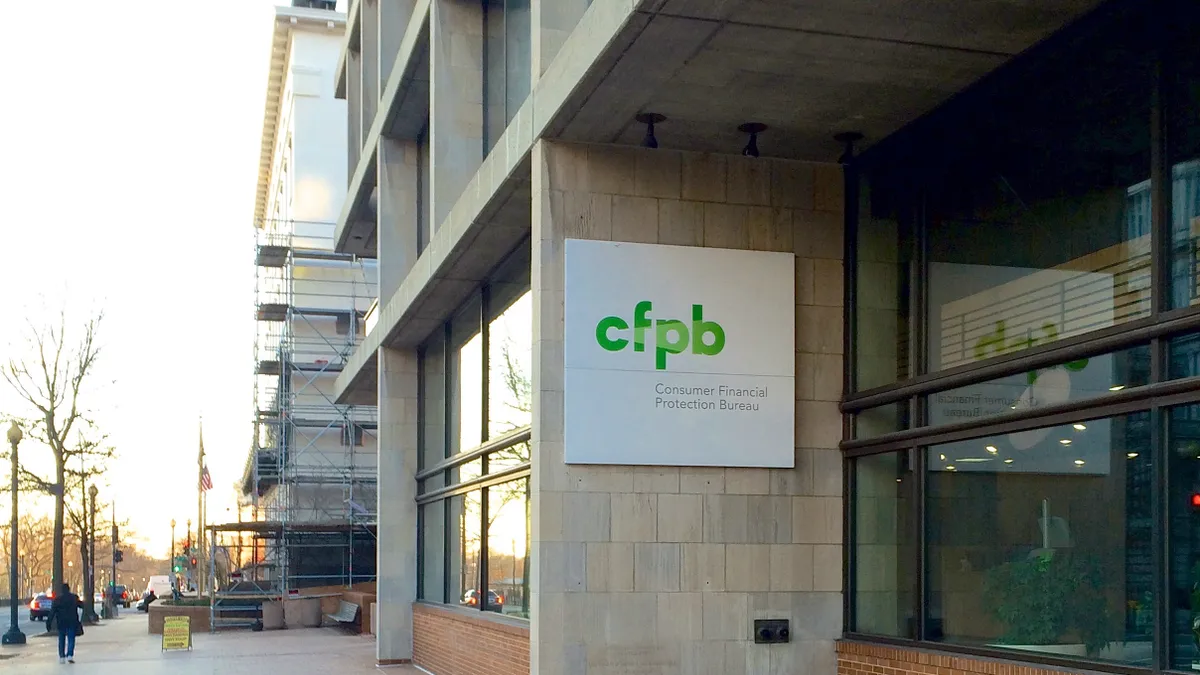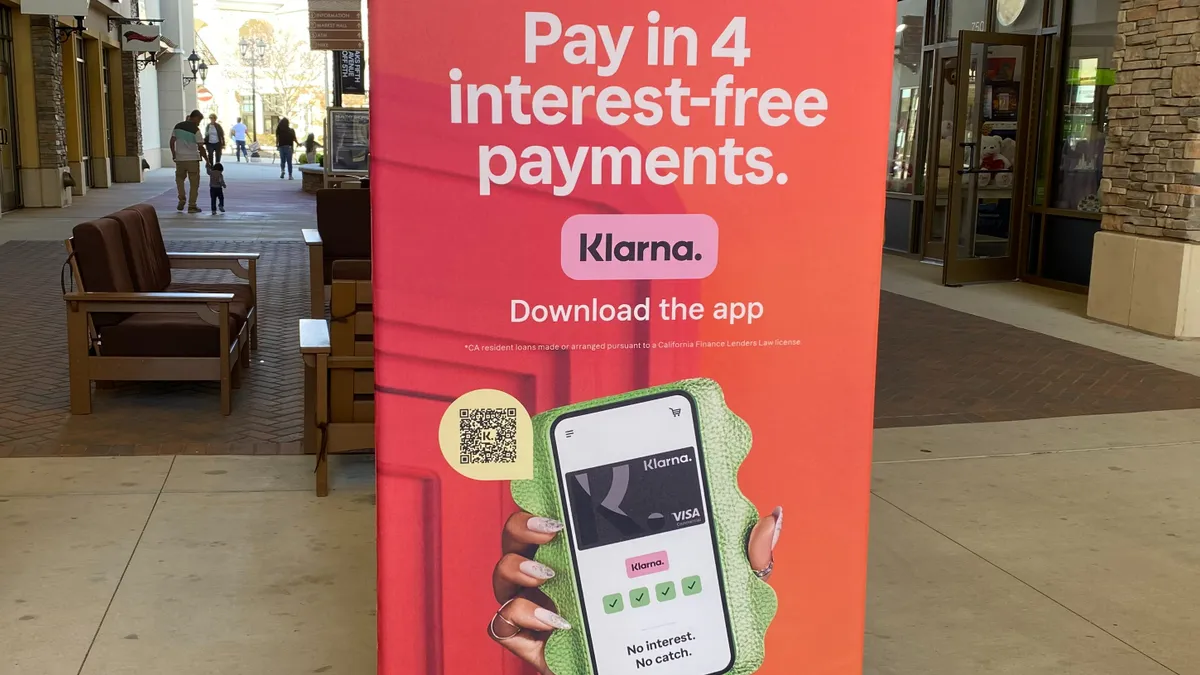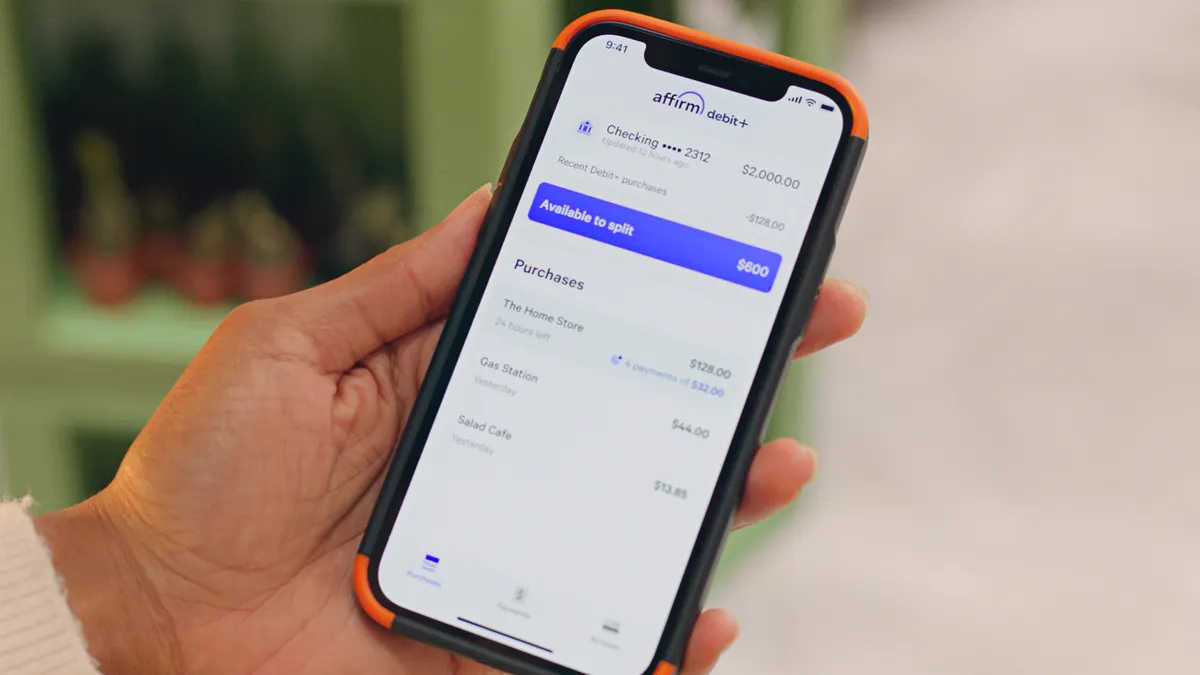Update: June 17, 2022: At least one of the credit reporting companies, TransUnion, said it’s moving in the direction of the CFPB’s recommendation this week. The others didn’t immediately respond to a request for comment.
“Incorporating tradeline reporting for BNPL on the core credit file is a once-in-a-generation financial inclusion opportunity,” TransUnion Senior Vice President Liz Pagel said in an emailed statement. “TransUnion will be incorporating this valuable data into the core file under a separate code that will allow lenders and scoring providers to phase the data in once they’ve had a chance to recalibrate their models to utilize the data from these new unique products.”
--------
The Consumer Financial Protection Bureau provided a first glimpse of its coming report on the buy now-pay later trend, urging credit reporting bureaus to standardize their approach to the new financing tool.
The regulator, in a blog post on Wednesday, said it has noticed that the three big U.S. credit reporting bureaus are not taking a standardized approach to reporting on consumers’ use of buy now-pay later financing and said that could be problematic.
The agency would like to “see the industry adopt standardized BNPL furnishing codes and formats appropriate to the unique characteristics of the product,” two CFPB officials said in the blog post. While having made some efforts on this front, the bureaus apparently haven’t satisfied the regulatory agency.
“This lack of furnishing could have downstream effects on consumers and the credit reporting system,” the agency’s blog post said. “It could be bad for BNPL borrowers who pay on time and may be seeking to build credit, since they may not benefit from the impact that timely payments may have on credit reports and credit scores. It may also impact both BNPL lenders and non-BNPL lenders seeking to understand how much debt a prospective borrower is carrying.”
Of the three bureaus, including Experian, Equifax and TransUnion, two are keeping files for buy now-pay later reports that are separate from consumers’ core credit file, while a third is using a distinct code to delineate BNPL use, but still letting BNPL lenders provide payment data in the format of their choice, the CFPB said.
The nationwide consumer reporting companies’ (NCRCs) “plans vary, and the Bureau is concerned that this inconsistent treatment will limit the potential benefits of furnished BNPL data to consumers and the credit reporting system,” the June 15 blog post authored by two agency officials said.
The agency noted that the unspecified company using the code approach may result in “inconsistent downstream impacts on consumers’ credit reports and scores” while the other two bureaus not placing data in a core consumer file may result in data not being reflected in typical credit reports and scores.
When it first began an inquiry into the growing BNPL trend last December, the CFPB expressed concerns that consumers might take on too much debt by tapping multiple lenders for spending on numerous purchases. In a December press release announcing the inquiry, the federal agency said it was reviewing the “risks and benefits of these fast-growing loans” and it asked the biggest BNPL companies, including Affirm, Afterpay, Klarna, PayPal and Zip, for information on their business practices.
For their part, the credit reporting companies outlined ways in which they’re adapting their approaches for BNPL not long after the CFPB inquiry began last year. Equifax said in December it was creating a new code to identify BNPL on consumers’ credit reports, while Experian said it would store consumers’ BNPL data separately from their core credit files.
The CFPB blog post noted that BNPL lenders weren’t providing this information to the bureaus until recently, and it believes that lenders should be providing both positive and negative data.
In addition to pushing for standardization of the data collection at the credit companies, the CFPB suggested the data should be added to “core credit files” sooner rather than later. The agency officials also recommended the credit bureaus and lenders “build and calibrate models that account for BNPL loans’ unique characteristics.”
“If BNPL data is maintained in these specialty files, these data may not be reflected in traditional credit reports and credit scores,” the agency said. “These shortcomings can be resolved through the standardized approach for furnishing BNPL data.”
In the meantime, the agency is going to be keeping tabs on how the lenders and bureaus adjust to the expanding BNPL trend. “We will monitor the progress of BNPL lenders, the NCRCs, and credit scoring companies as the BNPL market grows and BNPL lenders choose to furnish information about repayment,” said the blog post, authored by the CFPB officials Martin Kleinbard and Laura Udis. Kleinbard was identified on the social media site LinkedIn as a BNPL senior fellow for markets and policy, while Udis was called a program manager in her LinkedIn profile.
They said the issue would be revisited “in the coming months” in a broader report that incorporates observations from the agency’s market monitoring and the responses to its inquiry.





















